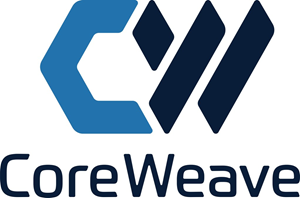CoreWeave: A Bold Bet on AI Infrastructure Amidst Market Uncertainty
May 17, 2025, 4:21 am

Location: United States, California, San Francisco
Employees: 201-500
Founded date: 2015
Total raised: $58.21B

Location: United States, New York
Employees: 51-200
Founded date: 2017
Total raised: $12.77B
In the fast-paced world of artificial intelligence, CoreWeave stands out like a lighthouse in a storm. The company recently reported its first earnings since going public, and the results were nothing short of explosive. Revenue surged by 420%, a figure that left analysts and investors buzzing. Yet, beneath the surface of this impressive growth lies a complex narrative of ambition, risk, and the ever-present specter of market volatility.
CoreWeave, a New Jersey-based company, specializes in renting out AI servers powered by Nvidia chips. As the demand for AI infrastructure skyrockets, CoreWeave is positioning itself as a key player in this burgeoning market. CEO Michael Intrator recently outlined a capital expenditure (capex) plan ranging from $20 billion to $23 billion for the year. This ambitious spending is a response to what he describes as “demand signals” from major tech clients, including Microsoft and OpenAI.
The stock market reacted with a mix of enthusiasm and caution. Shares initially jumped over 5% following the earnings report but closed down 2.5% the next day. This volatility reflects the uncertainty surrounding CoreWeave’s future. While the revenue growth is impressive, concerns linger about the company’s mounting debt and the sustainability of its business model.
Investors are grappling with the implications of CoreWeave’s aggressive capex plans. Some analysts, like DA Davidson’s Gil Luria, have expressed skepticism. They argue that the company’s high interest rates on debt, coupled with a business model that relies heavily on short-term demand, could spell trouble. Luria’s downgrade of CoreWeave’s stock to “underperform” highlights the tension between growth and financial stability.
Yet, amidst these concerns, there’s a silver lining. CoreWeave’s backlog of remaining performance obligations has grown to $25.9 billion, a 63% increase. This figure suggests that the company has a robust pipeline of future revenue, even as it navigates the choppy waters of current market conditions. The commitment from OpenAI, which recently signed a five-year deal worth nearly $12 billion, further solidifies CoreWeave’s position in the AI landscape.
Jim Cramer, a prominent financial commentator, weighed in on CoreWeave’s performance. He praised the company’s ability to meet soaring demand for computing power, a sentiment echoed by many in the industry. Cramer noted that while profitability may be mixed, the underlying demand for CoreWeave’s services is undeniable. This demand is a lifeline, especially as the company grapples with high operational costs and the need for rapid expansion.
The duality of CoreWeave’s situation is striking. On one hand, the company is riding a wave of unprecedented growth, fueled by the AI revolution. On the other hand, it faces significant risks associated with its capital expenditures and debt levels. The question remains: can CoreWeave sustain its growth trajectory while managing these financial pressures?
The answer may lie in the company’s ability to execute its ambitious plans. Intrator’s confidence in CoreWeave’s financial health is bolstered by the support of lenders who understand the company’s contracts and business model. This relationship is crucial as CoreWeave seeks to scale its operations and deliver on its promises to clients.
As the AI landscape continues to evolve, CoreWeave’s story will be one to watch. The company is at a crossroads, balancing the thrill of rapid growth with the caution required to navigate a volatile market. Investors will be keenly observing how CoreWeave manages its capital expenditures and whether it can convert its impressive revenue growth into sustainable profitability.
In a world where technology evolves at breakneck speed, CoreWeave is a testament to the power of ambition. The company’s bold moves reflect a belief in the future of AI and the infrastructure that supports it. However, the road ahead is fraught with challenges. As CoreWeave forges ahead, it must remain vigilant, adapting to the ever-changing landscape of the tech industry.
In conclusion, CoreWeave embodies the spirit of innovation and risk-taking that defines Silicon Valley. Its journey is a microcosm of the broader challenges facing tech companies today. As the demand for AI infrastructure grows, CoreWeave stands ready to meet it. But will it be able to balance growth with financial prudence? Only time will tell. For now, the company is a beacon of potential in the AI revolution, illuminating the path forward for investors and tech enthusiasts alike.
CoreWeave, a New Jersey-based company, specializes in renting out AI servers powered by Nvidia chips. As the demand for AI infrastructure skyrockets, CoreWeave is positioning itself as a key player in this burgeoning market. CEO Michael Intrator recently outlined a capital expenditure (capex) plan ranging from $20 billion to $23 billion for the year. This ambitious spending is a response to what he describes as “demand signals” from major tech clients, including Microsoft and OpenAI.
The stock market reacted with a mix of enthusiasm and caution. Shares initially jumped over 5% following the earnings report but closed down 2.5% the next day. This volatility reflects the uncertainty surrounding CoreWeave’s future. While the revenue growth is impressive, concerns linger about the company’s mounting debt and the sustainability of its business model.
Investors are grappling with the implications of CoreWeave’s aggressive capex plans. Some analysts, like DA Davidson’s Gil Luria, have expressed skepticism. They argue that the company’s high interest rates on debt, coupled with a business model that relies heavily on short-term demand, could spell trouble. Luria’s downgrade of CoreWeave’s stock to “underperform” highlights the tension between growth and financial stability.
Yet, amidst these concerns, there’s a silver lining. CoreWeave’s backlog of remaining performance obligations has grown to $25.9 billion, a 63% increase. This figure suggests that the company has a robust pipeline of future revenue, even as it navigates the choppy waters of current market conditions. The commitment from OpenAI, which recently signed a five-year deal worth nearly $12 billion, further solidifies CoreWeave’s position in the AI landscape.
Jim Cramer, a prominent financial commentator, weighed in on CoreWeave’s performance. He praised the company’s ability to meet soaring demand for computing power, a sentiment echoed by many in the industry. Cramer noted that while profitability may be mixed, the underlying demand for CoreWeave’s services is undeniable. This demand is a lifeline, especially as the company grapples with high operational costs and the need for rapid expansion.
The duality of CoreWeave’s situation is striking. On one hand, the company is riding a wave of unprecedented growth, fueled by the AI revolution. On the other hand, it faces significant risks associated with its capital expenditures and debt levels. The question remains: can CoreWeave sustain its growth trajectory while managing these financial pressures?
The answer may lie in the company’s ability to execute its ambitious plans. Intrator’s confidence in CoreWeave’s financial health is bolstered by the support of lenders who understand the company’s contracts and business model. This relationship is crucial as CoreWeave seeks to scale its operations and deliver on its promises to clients.
As the AI landscape continues to evolve, CoreWeave’s story will be one to watch. The company is at a crossroads, balancing the thrill of rapid growth with the caution required to navigate a volatile market. Investors will be keenly observing how CoreWeave manages its capital expenditures and whether it can convert its impressive revenue growth into sustainable profitability.
In a world where technology evolves at breakneck speed, CoreWeave is a testament to the power of ambition. The company’s bold moves reflect a belief in the future of AI and the infrastructure that supports it. However, the road ahead is fraught with challenges. As CoreWeave forges ahead, it must remain vigilant, adapting to the ever-changing landscape of the tech industry.
In conclusion, CoreWeave embodies the spirit of innovation and risk-taking that defines Silicon Valley. Its journey is a microcosm of the broader challenges facing tech companies today. As the demand for AI infrastructure grows, CoreWeave stands ready to meet it. But will it be able to balance growth with financial prudence? Only time will tell. For now, the company is a beacon of potential in the AI revolution, illuminating the path forward for investors and tech enthusiasts alike.

